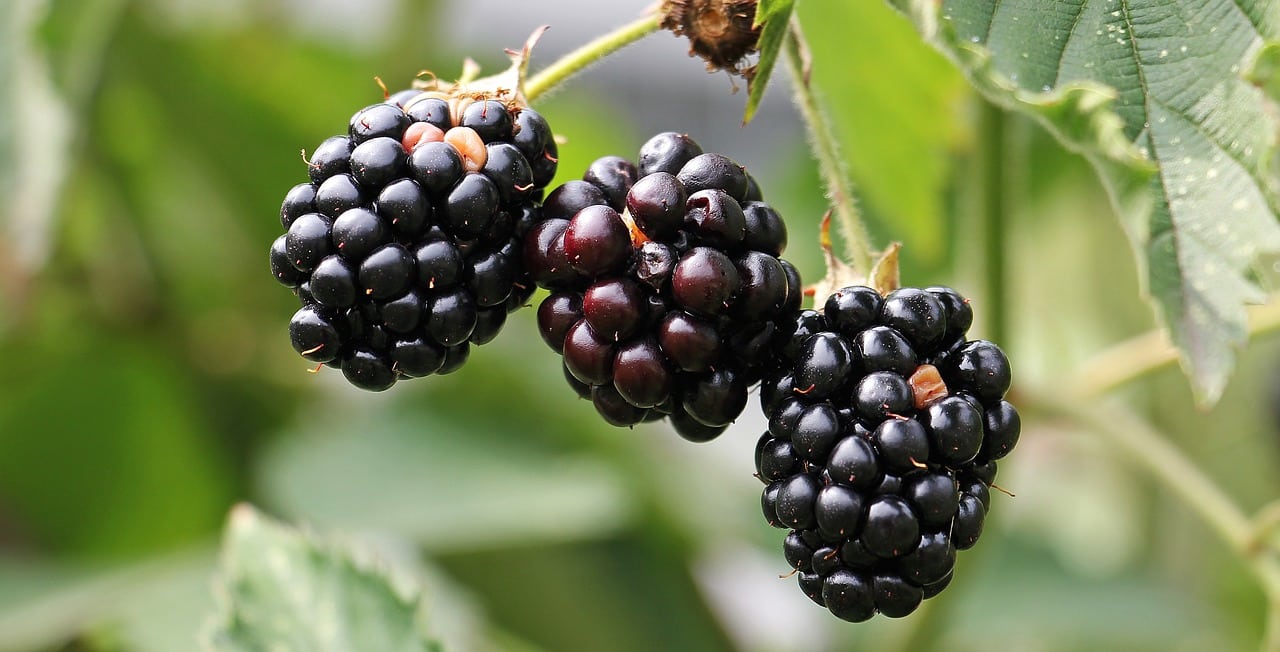
How Do You Treat Blackberries Fungus?
Treating blackberry fungus involves identifying the specific type of fungus and then applying the best fungicide for blackberries tailored to that issue. It typically involves a combination of proper pruning, selecting resistant varieties, maintaining optimal watering practices, and applying the suitable fungicide at the right time. Regular monitoring and prevention strategies also play an essential role in keeping the fungus at bay.
Understanding the lifecycle of the fungus, selecting the right product, and following the manufacturer’s instructions ensures effective treatment and luscious, healthy blackberries.
Selecting the Right Fungicide
Choosing the proper fungicide is crucial for effective treatment. Here, we’ll explore the considerations that guide this choice.
Identifying the Type of Fungus
Different fungi affect blackberries, and identifying the culprit is the first step to effective treatment. Proper diagnosis guides the selection of the most suitable fungicide. Observing the symptoms on the plant can provide valuable clues. Some fungi manifest as white powdery spots, others as yellowing or wilting leaves, and some might even cause cankers on stems.
Utilizing resources like online guides, local gardening centers, or agricultural extension offices can further assist in identifying the specific fungus affecting your blackberries. In some cases, it might be wise to consult with a professional plant pathologist or send a sample to a diagnostic laboratory. Accurate identification ensures that the correct fungicide is applied, maximizing its effectiveness and helping your blackberries thrive without unnecessary trial and error.
Choosing a Product
Various fungicides are formulated to treat specific fungi. Reading labels and consulting with experts can help in selecting the most effective product for your blackberries. Considering the specific needs of your plants, the local climate, and the application method can help you find a product that not only eradicates the existing problem but also helps prevent future issues.
It’s also worth looking into eco-friendly options, especially if you’re growing blackberries for personal consumption. Many fungicides now offer organic formulations that are highly effective without harming beneficial insects or adding chemical residues. Local garden centers or agricultural extension offices may provide guidance tailored to your area’s particular needs, ensuring that the chosen fungicide aligns with both your goals and the health of your blackberries.
Application Tips and Techniques
Applying fungicide correctly maximizes its effectiveness. Here’s what you need to know.
Timing is Key
Applying fungicide at the right time in the growth cycle ensures maximum protection. Following a schedule aligned with the specific fungus and growth stage is essential. Here are the steps to follow:
- Identify the Fungus: Know what kind of fungus you are dealing with, as this will guide the timing of the fungicide application.
- Read the Product Instructions: Different fungicides have specific timing recommendations. Always consult the manufacturer’s guidelines for the best results.
- Consider the Growth Stage: Apply the fungicide at a growth stage that aligns with the instructions. This could be during flowering, fruiting, or another key phase of development.
- Monitor Weather Conditions: Avoid applying fungicide just before rain, as it may wash off the product. Look for a dry and calm day for application.
- Repeat as Necessary: Some fungicides require multiple applications at specific intervals. Make a schedule and stick to it for continuous protection.
By adhering to these timing considerations, you can optimize the effectiveness of the fungicide, ensuring robust protection for your blackberries against harmful fungi.
Proper Mixing and Spraying
Mixing and spraying the fungicide according to the manufacturer’s guidelines ensures optimal effectiveness without damaging the plants. Here’s how to do it right:
- Choose the Right Equipment: Select a sprayer that is suitable for your garden’s size and the particular fungicide you’re using.
- Read the Label: Consult the fungicide’s label for specific mixing instructions, including the correct proportions and any necessary safety precautions.
- Measure Accurately: Use precise measurements when mixing the fungicide with water or other carriers, as specified by the instructions.
- Mix Thoroughly: Stir the mixture well to ensure uniform consistency. This ensures that the active ingredients are evenly distributed throughout the liquid.
- Check Nozzle Settings: Adjust the sprayer nozzle to the recommended setting, so it dispenses the fungicide in the correct pattern and droplet size.
- Apply Evenly: Spray the fungicide evenly across the blackberry plants, making sure to cover all surfaces that need protection, including the undersides of leaves.
- Clean Equipment: After application, clean the sprayer and other equipment thoroughly to prevent contamination or residue build-up.
- Observe Safety Precautions: Wear appropriate protective clothing and follow safety guidelines as outlined in the product instructions.
These steps will help you mix and spray the fungicide effectively, providing your blackberries with the best possible protection against fungus. Always refer to the product’s specific instructions, as formulations and requirements may vary between products.
Prevention Strategies
Beyond treatment, prevention plays a vital role in maintaining healthy blackberries. Here’s what to keep in mind:
- Choose resistant blackberry varieties
- Prune and space plants for good air circulation
- Water at the base rather than overhead to minimize moisture on leaves
- Monitor plants regularly for early signs of infection
Conclusion
From identification to application, selecting the best fungicide for blackberries requires a thoughtful approach. Combining treatment with prevention and proper care creates a robust defense against fungus, paving the way for bountiful, succulent blackberries. Happy growing!
